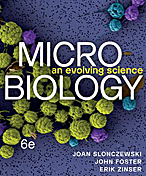Anaeromyxobacter dehalogenans
A Microbial Biorealm page on the genus Anaeromyxobacter dehalogenans
Classification
Higher order taxa
Bacteria; Proteobacteria; delta/epsilon subdivisions; Deltaproteobacteria; Myxococcales; Cystobacterineae; Myxococcaceae; Anaeromyxobacter.
Species
|
NCBI: Taxonomy |
The Anaeromyxobacter dehalogenans 2CP-C strain has been most studied and its complete genomic sequence has been determined. While the Anaeromyxobacter sp. FAc12, Anaeromyxobacter sp. Fw109-5 and environmental samples such as uncultured Anaeromyxobacter sp. are species that fall under Anaeromyxobacter dehalogenans.
Description and significance
Describe the appearance, habitat, etc. of the organism, and why it is important enough to have its genome sequenced. Describe how and where it was isolated. Include a picture or two (with sources) if you can find them.
Anaeromyxobacter dehalogenans is a rod-shaped spore-forming soil bacterium. It was the first Myxobacterium that was found capable of anaerobic respiration (Sanford) wherein it is able to grow by coupling the oxidation of acetate or hydrogen to the reduction of ortho-substituted halophenols, ferric iron, nitrate, nitrite and fumarate (NCBI). It was first isolated by enrichment and isolation of single plate-grown colonies obtained from uranium-contaminated sediment collected at the U.S. DOE Field Research Center near Oak Ridge, TN, which allowed for a 16s rRNA gene-based community analysis of the sample that suggested that the species helped in metal reduction (Petrie). These metal-reducing microorganisms are widely distributed in the environment (Sanford), and evidence shows they exist in acidic subsurface sediments (North).
A. dehalogenans is an important model organism where studing the potential interferences between the competing substrates in contaminated environments can teach us a great deal about bioremidiation (Sanford) because it exists both as a productive dechlorinator and metal reducer. Sequencing this bacteria also provides information about the reductive dehalogenase genes and the organization of its operon in order to design nucleic acid-based tools to "detect, monitor and quantify functional genes involved in reductive dechlorination processes at contaminated sites" (JGI). Also, understanding the unique class of enzymes with novel catalytic proteins can lead to biotechnological applications (Genome).
Genome structure
Describe the size and content of the genome. How many chromosomes? Circular or linear? Other interesting features? What is known about its sequence? Does it have any plasmids? Are they important to the organism's lifestyle?
The genome of Anaeromyxobacter dehalogenans contains 5,013,479 bp, 4,346 genes and 58 RNA genes. JGI has determined the complete genomic sequence of strain 2CP-C.
It has a circular chromosome.
Cell structure and metabolism
Describe any interesting features and/or cell structures; how it gains energy; what important molecules it produces.
Anaeromyxobacter dehalogenans has anaerobic growth and lacks a fruiting body, which is uncharactaristic of the Myxococcus subgroup it belongs to, but it can be considered a Myxococcus due to other close resemblences. It is a member of the delta-proteobacteria group that exhibits anaerobic diversity like sulfate reduction, iron reduction, fermentation and dehalogenation (32 Char/Desc). The A. dehalogenan lifestyle is where the halogenated compounds are used as electron acceptors for growth and chlororespiration is also able to release energy for the growth.
A. dehalogenans has a great deal of metabolic diversity, such as "halorespiration of herbicides, ferric-ion reduction, ammoniafication, and N2O reduction" (USDA). It is able to grow under different redox conditions. It also has electron donor versatility and it uses oxidized metals like Uranium(VI) and Fe(III), phenols, oxygen, nitrite, nitrate and fumarate as terminal electron aceeptors (Sanford). It is able to couple electron acceptor reduction with the oxidation of compounds such as formate, hydrogen, acetate, succinate, pyruvate and glucose (Genome).
Ecology
Describe any interactions with other organisms (included eukaryotes), contributions to the environment, effect on environment, etc.
Pathology
How does this organism cause disease? Human, animal, plant hosts? Virulence factors, as well as patient symptoms.
Application to Biotechnology
Does this organism produce any useful compounds or enzymes? What are they and how are they used?
Current Research
Enter summaries of the most recent research here--at least three required
References
Edited by student of Rachel Larsen and Kit Pogliano
